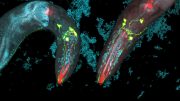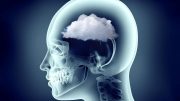
Early life stress can induce hormonal alterations in girls, leading to abnormal brain connectivity and signs of anxiety and depression by age 18.
Stressful experiences in the first year of life can drive hormonal changes in girls later in childhood. These chemical changes lead to abnormal brain connectivity, signs of anxiety, and depression at age 18.
The researchers published their findings in the journal Nature Neuroscience. Stress in early life is a risk factor for a large variety of psychological and physical problems, from mood disorders and substance abuse, to obesity and cardiovascular disease. This new study suggests that for some individuals, childhood experiences permanently alter the way that their brains and bodies cope with stress.
In 1989 the Wisconsin Study of Families and Work was launched. It has collected an array of medical and demographical information on several hundred children from birth to early adulthood.
An earlier study on this data sample reported that 4-year-olds exposed to high levels of everyday stress, from maternal depression, parental arguments and financial issues, had high amounts of cortisol in their saliva. These high levels of cortisol were linked to aggression, impulsivity, and other behavioral problem when the children were observed two years later.
In the new study, it’s been reported that this increased cortisol affects brain functions 14 years later. The scientists scanned the brains of fifty-seven 18-year-olds. The girls who had high cortisol levels at age 4 had weak connectivity between the amygdala, a deep nub of the brain known for processing fear and emotions, and the ventromedial prefrontal cortex, a region involved in curbing the amygdala’s stress response.
The study also found that girls that have higher scores on anxiety tests have weaker synchrony between these two regions than girls with lower scores. The opposite pattern was found for depressive symptoms, higher depression scores correlate with stronger connectivity. This is puzzling, but the researchers believe it could be that both strong synchrony and weak synchrony are signs of important connections between the two affected brain regions.
Reference: “Developmental pathways to amygdala-prefrontal function and internalizing symptoms in adolescence” by Cory A Burghy, Diane E Stodola, Paula L Ruttle, Erin K Molloy, Jeffrey M Armstrong, Jonathan A Oler, Michelle E Fox, Andrea S Hayes, Ned H Kalin, Marilyn J Essex, Richard J Davidson and Rasmus M Birn, 11 November 2012, Nature Neuroscience.
DOI: 10.1038/nn.3257








Be the first to comment on "Neural Connection Between Infant Stress & Depression in Teenage Girls"